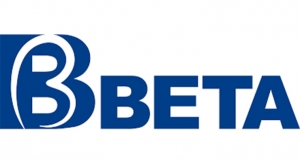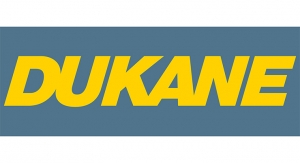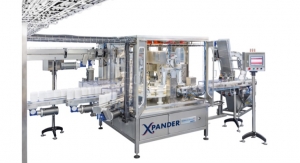Wet wipes and other pre-moistened applicators for topical drug administration are becoming more prevalent in drug development. These formats offer patient and provider-friendly life cycle management opportunities for topical drug manufacturers. Demand for wipes used in healthcare settings is expected to increase through 2023 and demand for all types of wipes is forecast to expand even greater. The Covid-19 pandemic has made these forecasts obsolete and points to unforeseen demand.
Patient preference and convenience are two key growth drivers for wet wipes in drug development. Recent market research conducted by AYTM market research concluded that two out of three patients prefer wet wipes to traditional topical creams, ointments, lotions, or gels. The majority of all patients agreed with all of the following statements:
• Wipes allow for more targeted, localized drug delivery with less potential for side effects;
• Individual packages for each wipe are more convenient and preferable to large tubes or jars;
• Wipes are a more discrete, portable packaging for use outside of your home;
• Application with wipes allows better limitation of application only to the area where the medicine is needed; and
• Wipes are less messy and less likely to spread to unwanted areas or get on clothes, etc.
Clinical considerations are also driving growth. These include measured dosing with lesser potential for systemic absorption and resultant adverse effects along with the reduced potential for cross-contamination provided by unit dose packaging. As topical drugs for dermatological conditions become more potent, such as Janus kinase (JAK) inhibitors and phosphodiesterase-4 (PDE4) inhibitors, it will become imperative that controlled, targeted delivery methods are available for better directed treatment of the dermatologic presentations of many diseases. Wipes can be applied more precisely than traditional creams, ointments, lotions and gels and their quick drying nature means that they are not subject to smearing and spreading to unwanted areas as is typical of traditional vehicles. Quick drying wipe medicines are also less likely to be transferred to clothing.
History of Wet Wipes
Arthur Julius is recognized for inventing wet wipes in 1958. In 1963, he started selling Wet-Nap products to Colonel Harland Sanders for use in hand washing by customers of Kentucky Fried Chicken. Soon wet wipes gained widespread use for cosmetic purposes including cleansing or moisturizing the skin, baby care, hand washing, makeup removal, washing the body when bathing is not practical, feminine, and other personal cleansing and application of sunless tanners and deodorants. Cosmetic wipes do not receive pre-market approval by the U.S. Food and Drug Administration (FDA), but are FDA-regulated under the Federal Food, Drug, and Cosmetic Act (FD&C Act) and the Fair Packaging and Labeling Act (FPLA) to ensure that they are safe when people use them as directed.
Wet wipes were soon developed for therapeutic purposes. Early FDA-approved drugs delivered utilizing pre-moistened applicators include acne treatment drugs, retinoids, antibiotics, antifungals, steroids, and local anesthetics. Acne treatments include salicylic acid and the antibiotics sulfonamide, clindamycin and erythromycin. The retinoid-like adapalene is available on a swab stick for the treatment of acne. Efinaconazole is an antifungal administered via a flow-through brush applicator. Corticosteroids applied via pre-moistened applicators include flurandrenolide and desonide. Local anesthetics available on wipes include lidocaine and benzocaine.
Wipes intended for therapeutic purposes are drugs under the law. Drugs must meet requirements for FDA approval for safety and effectiveness before they go on the market. Drugs are regulated by FDA’s Center for Drug Evaluation and Research (CDER). With the increasing use of wipes for therapeutic purposes, wipe manufacturers began to develop alternative devices including swabs, swab sticks, oral swabs, pads in a jar and other formats collectively referred to as pre-moistened drug applicators.
Case Study: QBREXZA
Eli Lilly’s QBREXZA (glycopyrronium) is a recent example of the benefits afforded by wet wipes in topical prescription drug delivery. Dermira, Inc. launched QBREXZA and was subsequently acquired by Eli Lilly and Company in February of this year. QBREXZA is approved by the FDA for patients nine years and older with primary axillary hyperhidrosis or excessive underarm sweating.
Hyperhidrosis is a condition of sweating beyond what is physiologically required for normal thermal regulation and affects an estimated 4.8% of the U.S. population, or approximately 15 million people. People with hyperhidrosis produce four to five times more sweat than the average person. Of these, 65%, or nearly 10 million people, suffer from sweating localized to the underarms (axillary disease), while 40 percent suffer from sweating on their hands. Studies have demonstrated that excessive sweating often impedes normal daily activities and can also result in occupational, emotional, psychological, social, and physical impairment.
QBREXZA (glycopyrronium) is an anticholinergic agent, a competitive inhibitor of acetylcholine receptors that are located on certain peripheral tissues, including sweat glands. This means QBREXZA blocks the “sweat signals” sent to certain sweat glands, inhibiting the action of acetylcholine on those glands, and thereby reducing the extent of sweating. Side effects of anticholinergic medications include: Dry mouth, blurred vision, dry eyes, constipation, urinary retention, dizziness, cognitive problems (confusion) and heart rhythm disturbance. Side effects from anticholinergics are relatively common and frequently lead to discontinuation of their use.
Prior to the availability of QBREXZA, dermatologists frequently used a combination of unapproved drug therapies or device technologies in an effort to minimize or eliminate sweating. In some instances, patients resorted to surgical procedures such as having sweat glands removed or cutting the nerves associated with sweating, or injecting Botox into problem areas often with varying results.
“There was recognition by this time that hyperhidrosis was an underserved medical condition, but lingering, unfounded concerns over the safety of glycopyrronium prevented the program from continuing,” says Hans Hofland, Ph.D., former VP, Research and Nonclinical Development at Dermira and current Co-Founder & Senior Vice President of Research at Evommune, Inc.
Dermira found itself in a dilemma.
How could a very effective hyperhidrosis therapy be delivered in a manner that minimized that adverse effects of commonly prescribed anticholinergics?
Glycopyrronium had an advantage over other anticholinergics in that it does not cross the blood-brain barrier, nor the placenta and it has a slower diffusion rate relative to other anticholinergic drugs, such as atropine and scopolamine. But the adverse reactions not mediated by the central nervous system (CNS) still presented an obstacle.
The wet wipe was selected based on the hypothesis that systemic drug exposure could be minimized at the same time that efficacy could be maximized in the sweat glands that contribute to primary axillary hyperhidrosis.
A number of prominent names in dermatology signed onto the drug development program and helped design trials that would not only confirm the therapy’s benefit, but also measure its impact on a patient’s quality of life before and after treatment. In Phase 3 trials, QBREXZA demonstrated that 60% of patients using the medicine reported a ≥4-point reduction in sweat severity score on an 11-point scale and a 74% reduction in median sweat production at Week 4. Most importantly 77% of patients reported daily treatment with QBREXZA improved their sweating. In the words of principal investigator Lawrence J. Green, M.D., Clinical Professor of Dermatology at The George Washington University School of Medicine, “Wipes offer patients an intuitive, effective and elegant method of delivery.”
The QBREXZA wet wipe clearly improves normal daily activities and provides an improvement in occupational, emotional, psychological, social, and physical impairment for patients suffering from primary axillary hyperhidrosis. “It’s really in line with our mission at Dermira where we’re trying to be very patient-centric and patient-focused,” says Lori Lyons-Williams, Chief Commercial Officer at Dermira.
Looking to the future, Eli Lilly has completed a proof-of-concept study for QBREXZA evaluating its efficacy and safety in people living with primary palmar hyperhidrosis (excessive sweating of the hands). Dermira is also looking to add additional indications for QBREXZA for patients with excessive sweating of the feet or face. The QBREXZA wipe is being investigated for these new indications.
Brand Life Cycle and Patent Protection
There are multiple pathways for topical drug manufacturers to gain FDA approval for their products. Section 505(b)(2) of the Federal Food, Drug, and Cosmetic Act is intended to streamline the development and FDA approval of pharmaceutical products that incorporate already-approved pharmacological agents. This provision was meant to encourage innovation and reduce the amount of duplicative research required for the approval of a clinically significant improvement to a well-characterized chemical entity. The 505(b)(2) regulatory pathway provides for FDA approval of a drug based in part on data that was not developed by the sponsor of the application, including published literature references and data previously reviewed by the FDA for the approval of a separate application. The scope of data from a prior application that can be referenced by a new sponsor is determined with FDA input and can include part of the required preclinical or clinical studies for approval.
For topical drug manufacturers, wet wipes provide an opportunity to not only improve products for patients but also to extend brand lifecycles. Manufacturers of existing topical drugs whose period of FDA recognized market exclusivity is nearing its end can consider extending their brand lifecycle by developing their brands in a wipe format via either the 505(b)(2) pathway or via a standard New Drug Application (NDA). The 505(b)(2) pathway to an NDA is much faster and less costly with the average cost of a Phase 3 trial being $19M and FDA user fee of $2.9MM.
The FDA has long struggled with generic substitution for topical medicines. Bioequivalence is difficult to demonstrate between topical drugs. Sampling drug concentrations within a solid tissue like the skin was not considered feasible until recently. But the FDA is now actively encouraging generic developers to bring generic topical drugs to market by advocating innovative bioequivalence methodologies. Examples of FDA advocated topical drug bioequivalence technologies include dermal open-flow microperfusion (dOFM) and major research initiatives on complex generic topical dermatological drug products designed to determine that they contain all the same ingredients in the same proportions, with essentially the same chemical, physical, and structural properties (e.g., pH, viscosity, drug crystal form, globule size distribution), as the brand name drug products.
The successful delivery of topical prescription drugs via a wet wipe may also provide potential for the patentability of certain aspects of the product, whether claims are directed to new formulations or in combination with novel wet wipes that involve proprietary engineering and delivery mechanisms associated therewith. Expansion of a patent portfolio can provide additional exclusivity in the marketplace with patent terms up to twenty years in the U.S.
The patient and provider-oriented benefits of wipes combined with FDA advocated bioequivalence technologies provide an opportunity for pharmaceutical drug manufacturers to fulfill unmet needs for patients suffering from many dermatological conditions as well as the health care providers and health care institutions that serve them. At the same time, they offer topical drug manufacturers an opportunity to improve their brands and extend their brand lifecycles.
Wet Wipes: A Practical Solution
Patient preference, convenience and ease of compliance will continue to be drivers for growth of wet wipes in the drug market. Clinicians will continue to recognize the benefits of measured dosing with lesser potential for systemic absorption and resultant adverse effects. The reduced potential for cross-contamination and reduced waste provided by unit dose packaging are attractive attributes of wipes that hospitals and long-term care institutions favor over the shortcomings inherent to the bulk packaging of traditional topical creams, ointments, lotions, or gels.




















